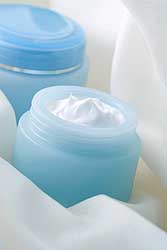| Home A B C D E F G H I J K L M N O P Q R S T U V W X Y Z |
|
Home |
Wrinkle Treatments: How to Get Rid of WrinklesWhat can be done to treat wrinkles? There are several medical (topical medicines and creams) and cosmetic techniques available for improving (minimizing) the appearance of wrinkles and even removing them. Below is a description of these methods. Vitamin A acid, also known as tretinoin, was originally developed for the treatment of acne. Over the past decade we have learned that daily application of vitamin A acid is also useful for the correction of wrinkles and some other results of sun damage. Creams containing this medication must be used on an ongoing basis. At first, they produce redness and peeling. Although this can be unpleasant for a while, it is essential to achieving improvement once the peeling stops. Alpha hydroxy acids are derived from fruit and milk sugars. The most commonly used alpha hydroxy acids are glycolic acid and lactic acid because they have a special ability to penetrate the skin. Alpha hydroxy acids have been used for thousands of years as a skin-rejuvenating product. Cleopatra is reported to have bathed in sour mild (lactic acid) to improve her complexion. Now hydroxy acids are a common additive to numerous skin care products including moisturizers, cleanser, toners, and masks. Preparations containing these fruit acids are quite safe and cause no more than mild and temporary irritation. The improvement they produce is, however, relatively subtle. 
Antioxidants are substances that may protect cells from the damage caused by unstable molecules known as free radicals. Free radical damage may lead to cancer. Antioxidants interact with and stabilize free radicals and may prevent some of the damage free radicals otherwise might cause. Examples of antioxidants include beta-carotene, lycopene, vitamins C, E, and A, and other substances. A study by a non-profit independent group of French scientists found that applying vitamins C, E and beta-carotene to the skin may significantly reduce the long-term damage caused by ultra-violet radiation, a key component of sunlight. It may also actually partially reverse damage already done, the scientists said. Studying 160 French women over an 18-month period, they found “a 23 percent reduction in the formation of new lines and wrinkles and an eight percent reduction in existing lines and wrinkles.” Regular creams, which don't contain any of the above substances, may make wrinkles look temporarily less prominent. This is what advertisers have in mind by products that “reduce the appearance of fine lines.” |
|
|
1 2 3 4 |
|
|
Glossary References Links Contact
|